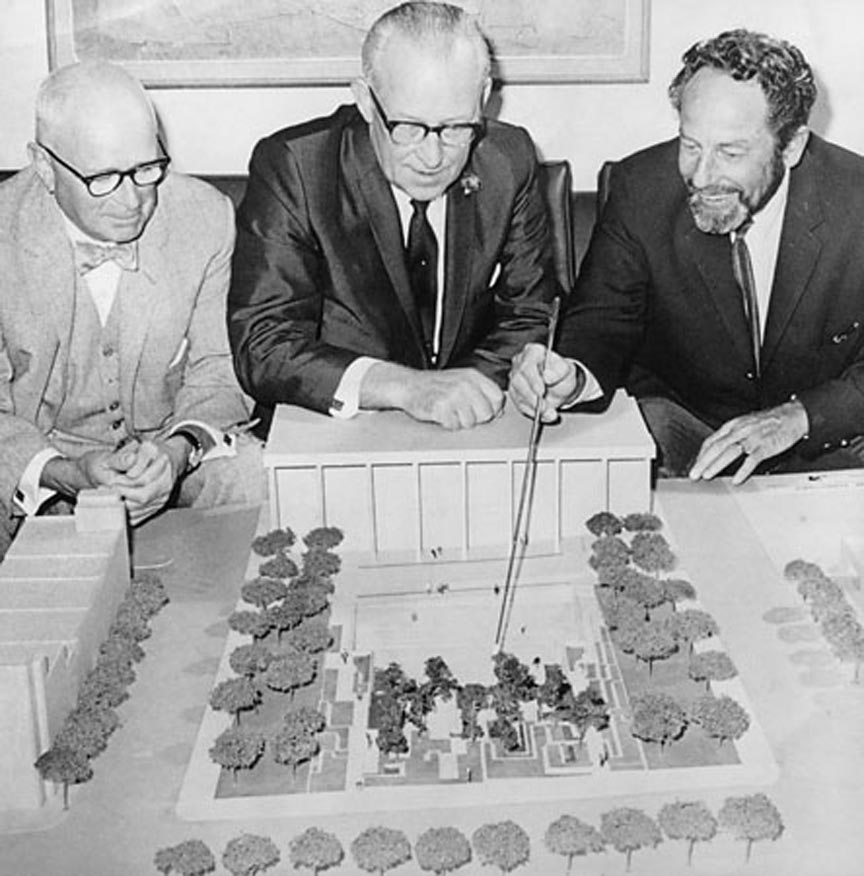- Catalog No. —
- ba018504, CN 012280
- Date —
- 1968
- Era —
- 1950-1980 (New Economy, Civil Rights, and Environmentalism)
- Themes —
- Geography and Places
- Credits —
- Oregon Historical Society Research Library
- Regions —
- Portland Metropolitan
- Author —
- Unknown
Ira Keller (1899-1978)
This photograph shows Ira Keller (left) and Mayor Terry Schrunk (center) looking over an architectural model of a proposal for the redevelopment of the South Auditorium area of Portland in 1968.
When the Portland Development Commission (PDC) began its work in 1958, its first chairman, Portland businessman Ira Keller, announced that he expected its decisions to be unanimous. Most people understood Keller to mean that the decisions would be his. Indeed, for the next fourteen years, Keller oversaw the commission and pushed ahead with controversial and sometimes successful—but often unpopular—urban renewal plans.
As chairman of the Commission, tasked with revitalizing Portland’s urban center, Keller pushed through a renewal plan for the South Auditorium area of downtown, building the Forecourt (later Ira Keller) Fountain there in 1970. Although many in Portland’s business sector praised the actions of the PDC in replacing run-down commercial districts and infusing new life into Portland’s older neighborhoods, many city residents criticized his actions. Former residents of renovated areas observed that Keller did not experience first-hand the effects of demolishing entire blocks of well-established single family homes occupied by ethnic minorities to make way for offices and apartment buildings. His critics also claimed that Keller wielded too much power in the city and did not tolerate dissent—for example, Keller did not welcome neighborhood input in commission plans that called for the razing of mostly immigrant housing the South Auditorium area.
Further reading:
Eugene Kimbark MacColl, Jr. “The Growth of Citizen Involvement in Urban Renewal: A Selective Case Study of Portland, Oregon, 1945-72.” B.A. Thesis, Princeton University, 1972.
© 2002 Oregon Historical Society
